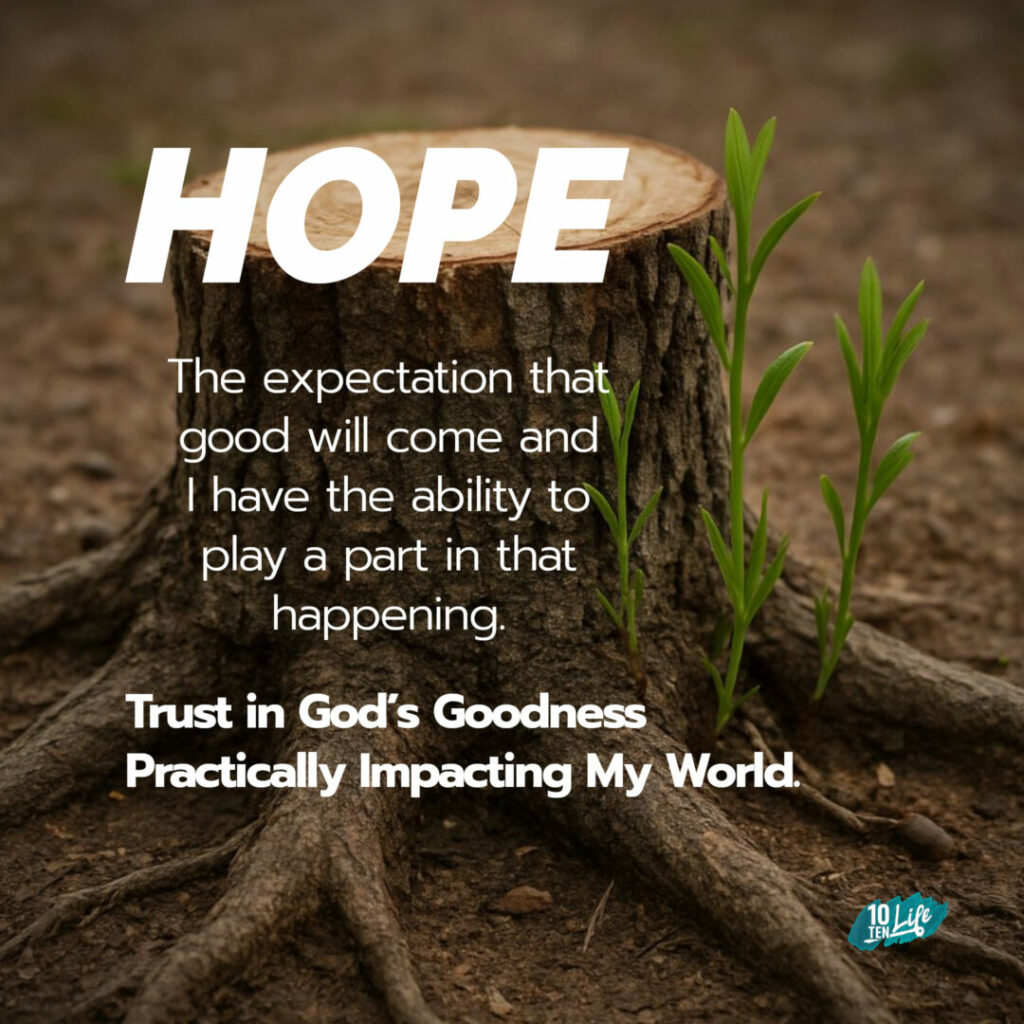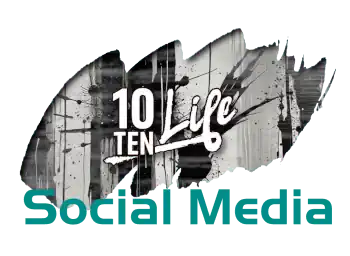Let’s cultivate inner anchors for Hope Overflowing—and steady action
What does the Bible mean by Hope Overflowing, and why is it helpful for leaders to understand this? Leaders face delays and pressure, yet the God of Hope fills us with joy and peace as we trust Him. Through the Holy Spirit, that fullness grows into hope, and as the Lord pours out His gifts, we overflow—reflecting His character in steady decisions, aligned teams, and wise action while outcomes take shape.
This post clarifies how Scripture grounds hope, how psychology strengthens practice, and how a small Stoic discipline conserves energy for what matters.
If you lead a team, a classroom, or a family, this speaks to your daily decisions. We build on Romans 15 and related passages, with practical tools you can teach in meetings. For context, see Business Leadership that Honors God: Lead with Scripture, Serve with Strength, and Romans 12 on Presenting Your Body as Worship and Freedom.
You will learn to locate where Hope Overflowing needs to rise, receive it by faith, and carry it into rooms and projects this week. Expect clear steps, Scripture you can pray, and skills that sustain momentum.
Hope Overflowing is an internal anchor that reshapes externals
Because Hope Overflowing is rooted in Christ, it regulates how you interpret pressure and choose your next step. Under strain, anchored leaders pause, pray briefly, and ask, “What’s the faithful action now?” That posture steadies the room. It also reframes constraints into assignments—prioritising what serves people, revealing blind spots, and protecting speech from sarcasm or despair (Eph. 4:29; Col. 4:6).
Translate the anchor into rhythm: open key meetings with a 30‑second blessing, identify one “most faithful” next step, and close by naming a small win to reinforce direction. This simple loop preserves clarity in volatility and keeps teams moving in unity.
When hope moves inside you, outcomes stop bossing you around.
Are you in a leadership position? The STRONGER Course helps you find strength in the Lord and transform your leadership so people flourish around you. Your growth is meant to flow to employees, congregations, colleagues, and family. Invest in yourself; it lifts your whole organization. Start today: https://10tenlife.com/live-the-abundant-life
The Root of Jesse
Life from a cut‑off stump (Romans 15:12; Isaiah 11)
Hope Overflowing is rooted in Jesus—the “Root of Jesse.” Picture a stump cut to ground level. It seems finished. Yet Isaiah promises, “A shoot will come up from the stump of Jesse; from his roots a Branch will bear fruit” (Isaiah 11:1). Paul cites this in Romans 15:12 to show that Christ rises where hope looked dead. Leaders face “stump moments”: a failing project, strained cash flow, or a team rift. In Christ, apparent endings become seedbeds.
When you remember the Root, you start watching stumps for shoots.

Hope Overflowing is internal
Anchored beyond externals (Hebrews 6:19; 1 Tim. 1:1)
Hope Overflowing is secured “behind the curtain” where Jesus anchored it (Hebrews 6:19). External shifts—markets, politics, or policy—do not define it. “Christ Jesus [is] our hope” (1 Timothy 1:1). Practically, this means you can bless your city, plan wisely, and refuse cynical speech before circumstances change.
Leaders who internalize this anchor carry a non‑anxious presence that steadies rooms and reframes options. Anchored hope trains you to act from truth instead of reacting to headlines.
Endurance that produces character
Paul gives the formation pathway: “suffering produces perseverance; perseverance, character; and character, hope.” The God of Hope first fills you with peace and joy (Romans 15:13; 5:1–5). You do not manufacture hope; you receive peace with God through Christ, rejoice under pressure, and let perseverance shape character. Application: pair every hardship with praise—name an attribute of God you will celebrate until hope rises.
Every trial can become a factory where endurance manufactures Hope.
Speak the language of hope – Ephesians 4:29; Colossians 4:6
Hope changes how you talk. “Let no corrupting talk come out of your mouths, but only such as is good for building up… Let your speech always be gracious, seasoned with salt.” Leaders set atmospheres. Replace “we can’t” with “here’s what we can do next.” Bless your organization and town aloud. Words do not deny problems; they insist on God’s larger truth while choosing constructive action.
Scriptural case studies you can teach this week
- Hannah prayed through pain until worship broke open (1 Samuel 1). Invite your team to name one long‑standing request and sanctify it with honest prayer.
- Elijah and the widow saw daily sufficiency in scarcity (1 Kings 17). Ask people on fixed incomes to list last month’s concrete provisions.
- Paul and Silas sang in prison, and the room was reordered (Acts 16). Practice praise in “stuck” meetings.
- Jairus discovered that Jesus is never late (Mark 5:21–43). Define faithful action while outcomes are delayed.
Testimony turns memory into fuel for today’s Hope Overflowing.
Need More Support?
Take the next step with personalized guidance. If you’re looking for more information, tailored recommendations, or just need help getting started, we’re here to support you every step of the way.
How Psychology Strengthens what Scripture commands
Agency and Pathways
Hope also benefits from a learnable skillset. Researchers describe hope as agency (“I can start and keep going”) and pathways (“I can find a way”). Use three tools:
- Frame approach goals (“build a daily 10‑minute walk”) rather than avoidant ones;
- Map two pathways to each goal so momentum survives disruptions.
- Distinguish state (today’s hope) from trait (general hopefulness) and coach accordingly.
These practices support the obedience Scripture calls for. Small, repeatable wins make it easier for Hope Overflowing to stick.
Positive emotion broadens capacity
Joy and gratitude are strategic. Joy and gratitude do not erase grief; they broaden attention and creativity. This explains why worship and thanksgiving often unlock fresh solutions under pressure. For leaders, scheduling brief gratitude rounds in meetings and celebrating micro‑wins builds durable resources—resilience, social bonds, and better self‑care—that keep Hope Overflowing active under load. Gratitude is both biblical and empirically wise. The quickest way to think bigger is to rejoice on purpose.
Religious coping
Shift guilt to grace, isolation to support. Decades of research show that positive religious coping—trusting God’s benevolence, seeking spiritual support, and benevolent reframing—predicts lower depression and higher meaning. Negative patterns—spiritual discontent, “God is punishing me”—correlate with worse outcomes. Pastoral leadership helps people transition from fear-based narratives to biblically grounded trust and community care, which is especially beneficial for vulnerable seniors. Hope Overflowing thrives where grace governs the story. When grace frames the struggle, people cooperate with God again.
A Stoic skill that serves a larger Gospel
Ancient Stoics emphasized focusing on what lies within our control and releasing what does not. Christians part ways on the topics of grace and resurrection hope, yet this discipline of attention remains useful. Apply it like this: steward judgments, choices, and responses; entrust outcomes to Jesus. It is a small, practical skill inside a far greater promise. Hope grows when energy is not wasted on what you cannot steer.
Guard your attention, and Hope conserves fuel for what matters.
Practices for leaders to keep Hope Overflowing this week
- Scripture liturgy: Speak one promise aloud each morning (Romans 15:13; Hebrews 10:23; Isaiah 46:4). Keep it by the kettle or keys.
- Blessing rule: Replace one complaint with a spoken blessing over your team or town (Numbers 6:24–26).
- Two‑person agreement: Pray weekly with one trusted partner for a single request until you see movement (Matthew 18:19–20).
- Intergenerational transfer: Tell one testimony to a younger colleague this week (Psalm 71:18).
- Sabbath micro‑rhythm: Guard one non‑negotiable window of quiet to listen, repent, and receive.
Habits turn moments of hope into a lifestyle of Hope Overflowing.
Overflow to others
Carry hope into rooms, projects, and cities (Luke 4:18–19)
Jesus announced a mission that sounds like Hope Overflowing in action: good news to the poor, liberty for captives, and the year of the Lord’s favor. As His people, we enter meetings determined to contribute one hope‑filled statement and one practical next step. We speak life over our industries and municipalities, pray for leaders, and invest in solutions. The Holy Spirit makes hope radiate; our words and work give it shape.
Conclusion
Hope Overflowing is God’s work within you that shapes what you say and do. Receive His joy and peace, keep a steady rhythm of prayer and blessing, and let hope spill into decisions that serve people well. If you lead others, now is the time to build this strength intentionally and share it freely.
Ready to walk this out with structure and support? Explore STRONGER and equip yourself to lead with hope that multiplies: https://10tenlife.com/live-the-abundant-life


Bible References
- Romans 15:13 (NIV) — “May the God of hope fill you with all joy and peace as you trust in Him, so that you may overflow with hope by the power of the Holy Spirit.”
- Romans 5:3–5 (NIV) — “We also glory in our sufferings, because we know that suffering produces perseverance; perseverance, character; and character, hope…”
- Isaiah 11:1 (NIV) — “A shoot will come up from the stump of Jesse; from his roots a Branch will bear fruit.”
- Hebrews 6:19 (NIV) — “We have this hope as an anchor for the soul, firm and secure.”
- 1 Timothy 1:1 (NIV) — “…Christ Jesus our hope.”
- Ephesians 4:29 (NIV) — “Do not let any unwholesome talk come out of your mouths, but only what is helpful for building others up…”
- Colossians 4:6 (NIV) — “Let your conversation be always full of grace, seasoned with salt…”
- Luke 4:18–19 (NIV) — “The Spirit of the Lord is on Me… to proclaim the year of the Lord’s favor.”
- Hebrews 10:23 (NIV) — “Let us hold unswervingly to the hope we profess, for He who promised is faithful.”
- Isaiah 46:4 (NIV) — “Even to your old age and gray hairs I am He… I will sustain you and I will rescue you.”
- Numbers 6:24–26 (NIV) — “The Lord bless you and keep you…”
- Matthew 18:19–20 (NIV) — “If two of you on earth agree about anything they ask for…”
- Psalm 71:18 (NIV) — “Even when I am old and gray, do not forsake me, my God, till I declare Your power to the next generation…”
Citations
- Snyder, C. R. (2002). Hope theory: Rainbows in the mind. Psychological Inquiry, 13(4), 249–275. https://www.tandfonline.com/doi/abs/10.1207/S15327965PLI1304_01
- Snyder, C. R., et al. (1991). The will and the ways: Development and validation of an individual‑differences measure of hope. Journal of Personality and Social Psychology, 60(4), 570–585. https://doi.org/10.1037/0022-3514.60.4.570
- Fredrickson, B. L. (2001). The role of positive emotions in positive psychology: The broaden‑and‑build theory of positive emotions. American Psychologist, 56(3), 218–226. https://doi.org/10.1037/0003-066X.56.3.218
- Rasmussen, H. N., Scheier, M. F., & Greenhouse, J. B. (2009). Optimism and physical health: A meta‑analytic review. Annals of Behavioral Medicine, 37(3), 239–256. https://doi.org/10.1007/s12160-009-9111-x
- Pargament, K. I., Koenig, H. G., & Perez, L. M. (2000). The many methods of religious coping: Development and initial validation of the RCOPE. Journal of Clinical Psychology, 56(4), 519–543. https://doi.org/10.1002/(SICI)1097-4679(200004)56:4%3C519::AID-JCLP6%3E3.0.CO;2-1
- Epictetus. Enchiridion. (public domain translation). https://classics.mit.edu/Epictetus/epicench.html
- Bible quotations NIV via BibleGateway: Romans 15:12–13; Romans 5:1–5; Isaiah 11:1,10; Hebrews 6:19; 1 Timothy 1:1; Ephesians 4:29; Colossians 4:6; Luke 4:18–19; Hebrews 10:23; Isaiah 46:4; Numbers 6:24–26; Matthew 18:19–20; Psalm 71:18. https://www.biblegateway.com/
It’s Time to Grow Stronger — Let’s Connect
Together, we’ll uncover your potential.
Thank you for your continued support, we appreciate your likes, follows and retweets on Facebook, X and LinkedIn. Make sure to share this post with friends and family.





